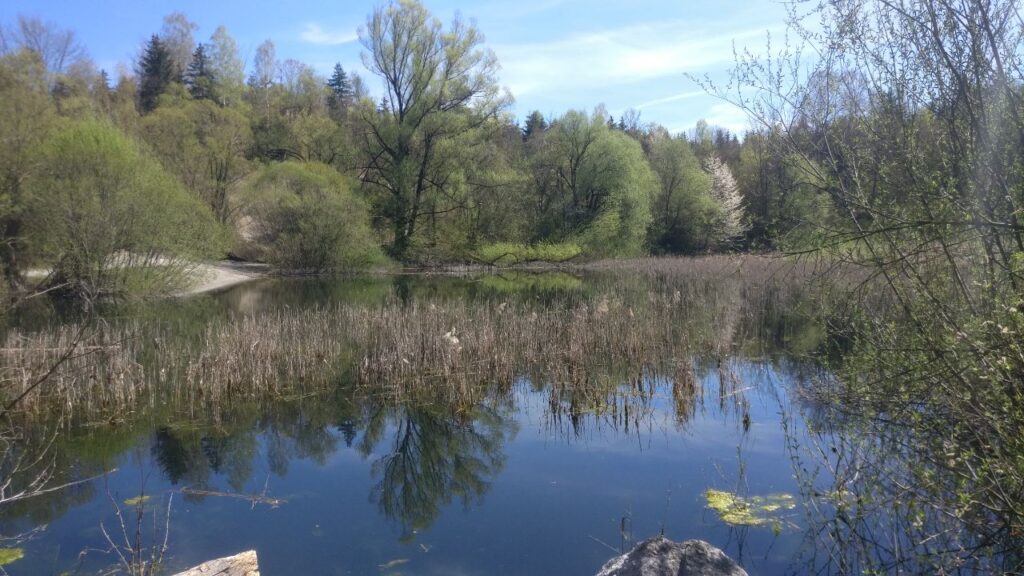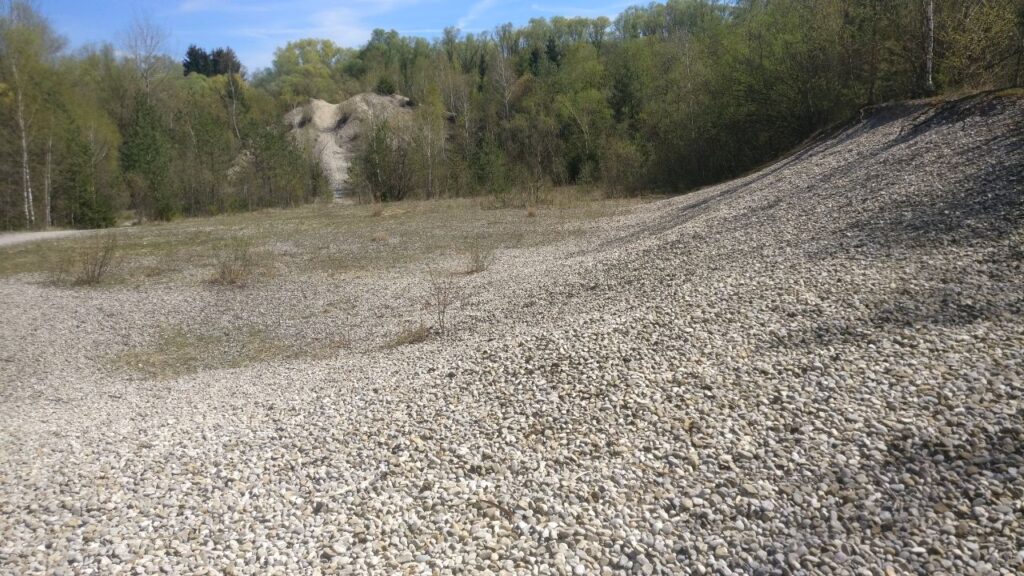This spring I visited Grubenpark, an old gravel quarry in southern Munich. The mine was exploited until the late seventies and its processing plant shutdown only twenty years ago. Fifty years of human inactivity in the quarry have transformed the wavy stony ground into a diverse forest, where lower areas of the pit turn into rain water ponds.

Stones everywhere are round and big, like the ones found in rivers. I’ve been told that in a previous geological time (maybe in the previous glacial period?) this area was on the path of a glacier. The flowing of the glacier on the ground pushed and eroded the gravel, placing it in its front, sides and within its ice mass. This phenomenon deposited large amounts of gravel in the area.

In water distribution networks, pipes are regularly cleaned. This is usually done through flushing water at high speed through the pipes (for instance, by opening a fire hydrant). There’s an innovative and water-saving method called ice pigging, in which an ice slurry is pumped through the pipe, forcefully removing deposits on the pipe walls. As I learned about the origin of gravel deposits in Grubenpark, the analogy with ice pigging came to mind. I felt maybe this technique is not as innovative as I thought; it mimics a powerful physical phenomenon that we’ve forever had before our eyes and we’ve just recently become aware of.

Aerial View of the Baltoro Glacier by Guilhem Vellut from Paris, CC BY-SA 2.0, via Wikimedia Commons
Water in the Munich region is of great quality, and apparently this too is related with the gravel. As underground water runs across the area, it gets naturally filtered by passing through the gravel layers. I couldn’t help but comparing this to active carbon filters or reverse osmosis processes for filtering water. I feel the more sophisticated an invention seems, the more borrowings it has from existing earth processes. There’s nothing we have created from scratch.